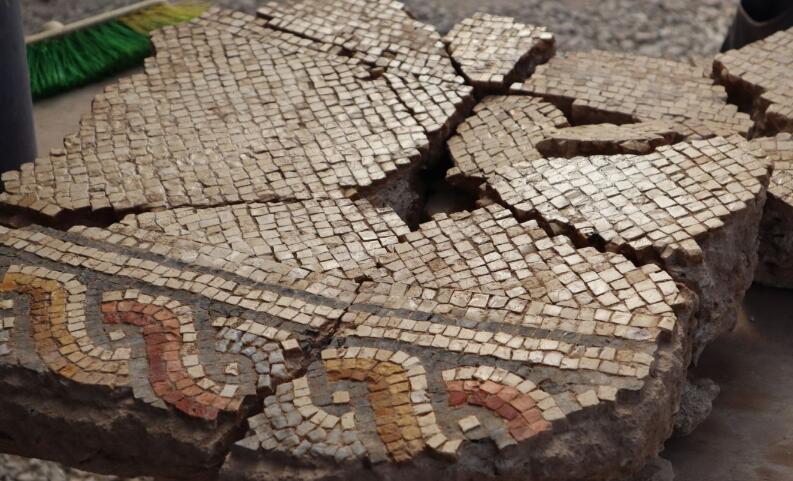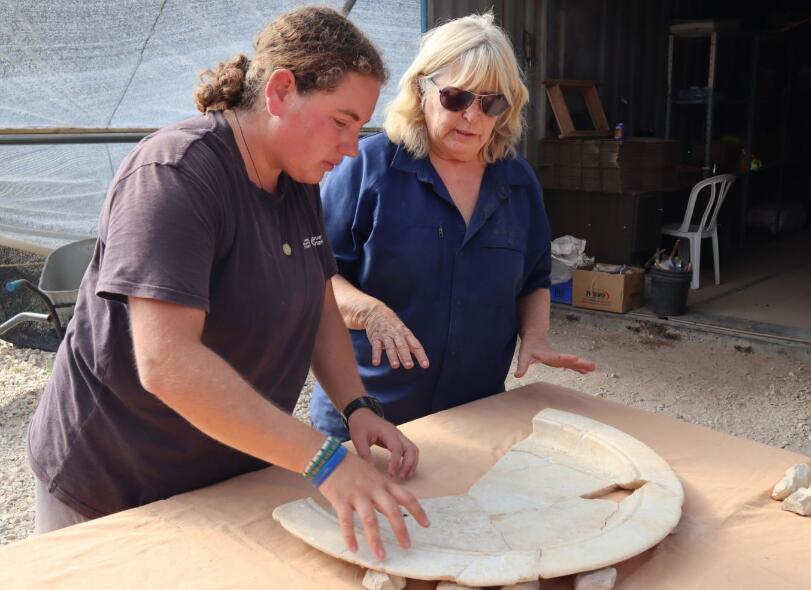Ancient Roman Garum Factory Found in Israel, Suitably Far Away From Town
A factory to make Roman fish sauce about 2,000 years ago has been found in Ashkelon – about 2 kilometers (1.25 miles) outside the ancient city.
The location of the vats on the southern city’s outskirts shores up the supposition that the fish sauce, called garum, had to be manufactured out of town because the process was an olfactory abomination.
The fish farms that provided the raw material for this ancient industry were no joy to live next to either, it seems.

Work being conducted at the Ashkelon excavation. Anat Rasiuk, Israel Antiquities Authority
Being a reeking concoction that begins with drying fish guts and then a fermentation stage, adding spice and serving, it is no wonder its production was kept afar from residential areas.
Modern palates might find the finished product just as objectionable, but the Roman and Byzantine obsession with garum is well documented. In fact, the obnoxious condiment remained in fashion throughout Middle Eastern parts until the Middle Ages.

Garum installations from the site on the outskirts of Ashkelon, southern Israel. Asaf Peretz, Israel Antiquities Authority
The Romans also ascribed medicinal properties to garum, but let us not forget these are also the people who thought lead was just the ticket for makeup, to line their water transport system and even put in some foods.
Like lead in your water, gold in your ice cream or mercury in your lipstick, garum wouldn’t cure a thing.
Garum was manufactured throughout the Mediterranean basin area – the remains of the industry have been found chiefly in Italy and Spain.

The Byzantine kilns producing wine jars at the site on the outskirts of Ashkelon. Asaf Peretz, Israel Antiquities Authority
“This is a rare find in our region and very few installations of this kind have been found in the Eastern Mediterranean,” says Tali Erickson-Gini from the Israel Antiquities Authority.
“Ancient sources even refer to the production of Jewish garum,” she adds. “The discovery of this kind of installation in Ashkelon evinces that the Roman tastes that spread throughout the empire were not confined to dress but also included dietary habits.”
Noxious brew
To be fair, it wasn’t the Romans who invented this noxious brew. Garum seems to go back over 2,500 years to ancient Greek and Phoenician cuisine. They shipped it in the same type of clay vessel (an amphora) that they used for wine and olive oil, and one theory posits that the noun itself derived from the Greek word for shrimp – sounds like garida.

The Byzantine winepresses at the site on the outskirts of Ashkelon. Asaf Peretz, Israel Antiquities Authority
If anything, modern epidemiologists suspect garum of spreading tapeworms hosted in fish throughout the Roman Empire, including to areas where fish were unknown. To be clear, if you eat an uncooked fish contaminated with cysts of Diphyllobothrium latum – i.e., the fish tapeworm – you get the worm.

Mosaic pavement from the Byzantine church at Ashkelon. Anat Rasiuk, Israel Antiquities Authority
However, the rub was the belated discovery by archaeoparasitologists that peoples throughout the far-flung Roman Empire got this hellish helminth, and what did they have in common? Not fish but garum, which was traded and eaten everywhere.
If the sauce had undergone a cooking stage, the worm eggs would have died. But it didn’t and they didn’t, and the result was an empire-wide tapeworm infestation.
It seems the end of garum came about less because people changed and more because the might of Rome waned and so did the trade in salt – which is key to making the stuff. Apparently, as the empire declined, garum became available mainly (and maybe only) in Rome itself. But in the empire’s heyday, the costly condiment was manufactured all along the empire’s coasts, including in North Africa and Spain. And it was eaten with positively everything, from the main course to the wine.

Israel Antiquities Authority archaeologists examining a marble tray from the altar area of the Byzantine church Anat Rasiuk, Israel Antiquities Authority
In general, our palates have changed over the millennia. Not a few recipes that came down to us from ancient Rome sound, by today’s standards, revolting, or at least impractical. Never mind lark’s tongue pie, how about boiled ostrich with honey and vinegar? If that sounds unpalatable, you could always garnish it with garum.

